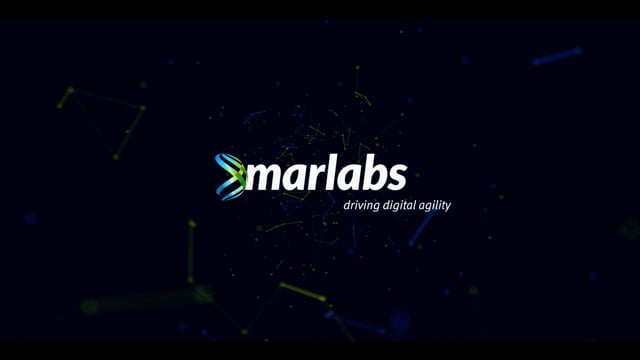If you’re reading this article, you’re definitely weighing the pros of building cloud-first applications. It’s the future of modern-day app development, but you’re wondering what the fuss is about. In today’s ever-evolving digital landscape, agility, scalability, and resilience are no longer buzzwords you can impress your clients with, they are table stakes. Cloud native application development (CNAD) emerges as a powerful methodology, allowing businesses to build and deploy applications specifically designed for the dynamic nature of cloud environments.
This article aims to simplify cloud application development (CNAD), exploring its core principles, how it’s expected to evolve in 2025, and the impact it’s having on the software development landscape.
Let’s begin with the classroom stuff. What is cloud native application development, you ask? Imagine an app that’s built for the cloud, not just shoved in there like an awkward guest at a party. It’s all about leveraging the cloud’s superpowers: flexibility, scalability, and that never-ending buffet of resources. Think of it as building a Lego castle instead of a brick fortress – you can easily add new towers, swap out colors, and adapt to whatever epic battle comes your way. The cloud’s modular, scalable, and dynamic properties make your app development endeavors a breeze.
Now, the key tenets of cloud native application development:
- Microservices Architecture: Ditch the monolithic structures (think a grumpy cyclops) and embrace a team of nimble microservices (think a squad of hyperactive squirrels). Each service does one thing well, making updates and scaling a breeze. This modularity fosters agility, simplifies development, and enhances fault tolerance.
- Containerization: Services are packaged within containers, standardized units that encapsulate application code and dependencies. Picture tiny, self-contained apartments for your code. Docker is the cool landlord, making it easy to deploy and move your microservices around the cloud. This enables portability, facilitates continuous integration and deployment (CI/CD), and optimizes resource utilization.
- Automation: Robots are your friends here! Infrastructure configuration is managed and provisioned through code, allowing for automation, repeatability, and consistency across environments. Infrastructure as Code (IaC) lets you automate tasks like provisioning servers, so you can focus on building awesome features, not babysitting servers.
- DevOps Collaboration: Development and operations teams work closely together throughout the application lifecycle, ensuring seamless build, testing, deployment, and monitoring. It's a beautiful marriage of developers and operations, working together to release code faster and smoother than a greased-up penguin on an ice rink.
- Continuous Delivery and Feedback: Frequent iterations and deployments are embraced, accompanied by robust feedback loops to ensure responsiveness to changing user needs and market demands. This means faster feedback, fewer bugs, and happier users (and developers!).
Cloud native application development (CNAD) in 2025:
- Serverless computing: Serverless computing is gaining traction, enabling developers to focus on business logic without worrying about server management. Let the cloud be your server-whisperer. You just focus on the code, and the cloud handles the grunt work. This will result in advancements in cost optimization while also addressing vendor lock-in concerns.
- Service mesh: Service mesh architectures are increasingly seen as essential for managing communication between microservices. Imagine a fancy traffic control system for your microservices. It handles routing, security, and observability, making your app run like a well-oiled, traffic-jam-free metropolis. Expect advancements in automated traffic management, security, and observability within service meshes.
- Edge computing: Bring your app closer to the action. As edge computing platforms mature, expect seamless integration of cloud native applications with distributed edge environments, facilitating low-latency, real-time applications. It’s like having a mini data center right next to your users. Think faster response times and lower latency, perfect for things like IoT and real-time applications.
- AI and machine learning: Infuse your app with intelligence! Integrating AI and machine learning capabilities into cloud native applications will become more accessible, empowering developers to build intelligent and adaptive applications. Use AI to optimize resource allocation, predict user behavior, and personalize experiences.
These trends showcase the dynamic nature of cloud native application development, constantly adapting to meet the evolving needs of businesses and cloud technologies. It is not just a technical methodology but rather, a cultural shift within organizations. Embracing collaboration, automation, and continuous learning are key to successfully navigating this agile and dynamic approach.
Marlabs designs and develops digital solutions that help our clients improve their digital outcomes. We deliver new business value through custom application development, advanced software engineering, digital-first strategy & advisory services, digital labs for rapid solution incubation and prototyping, and agile engineering to build and scale digital solutions. Our offerings help leading companies around the world make operations sleeker, keep customers closer, transform data into decisions, de-risk cyberspace, boost legacy system performance, and seize novel opportunities and new digital revenue streams.
Marlabs is headquartered in New Jersey, with offices in the US, Germany, Canada, Brazil and India. Its 2500+ global workforce includes highly experienced technology, platform, and industry specialists from the world’s leading technical universities.






